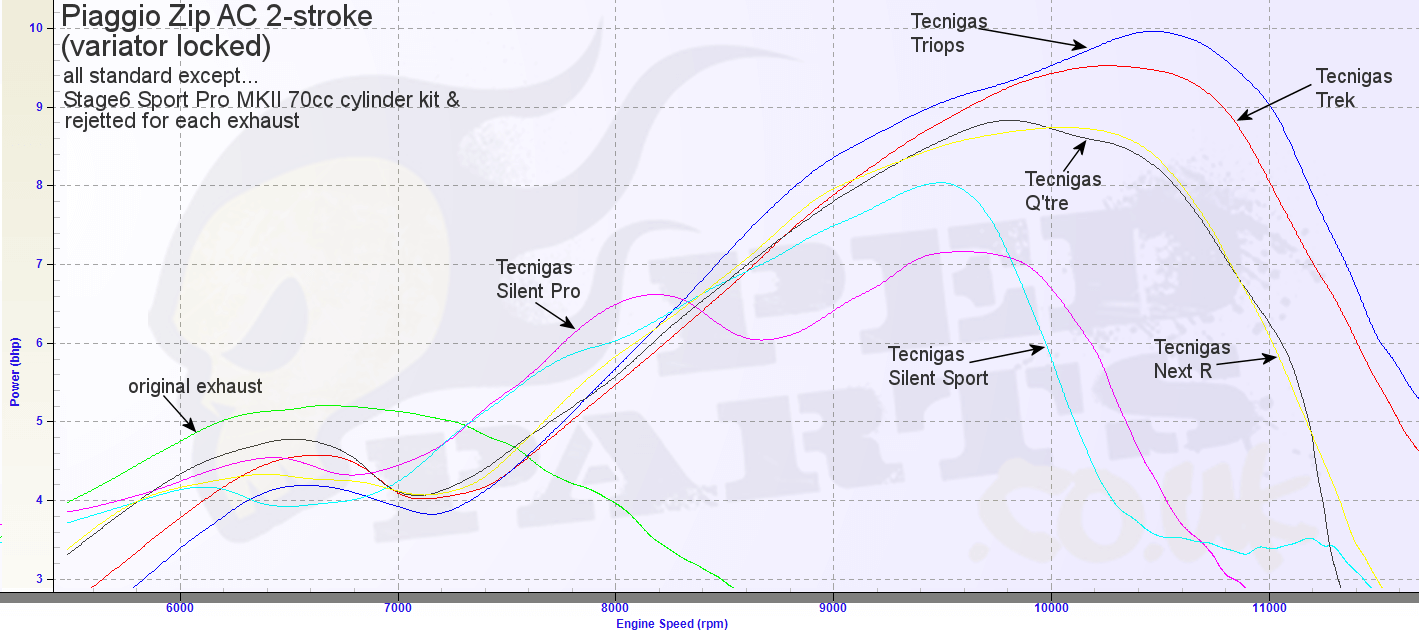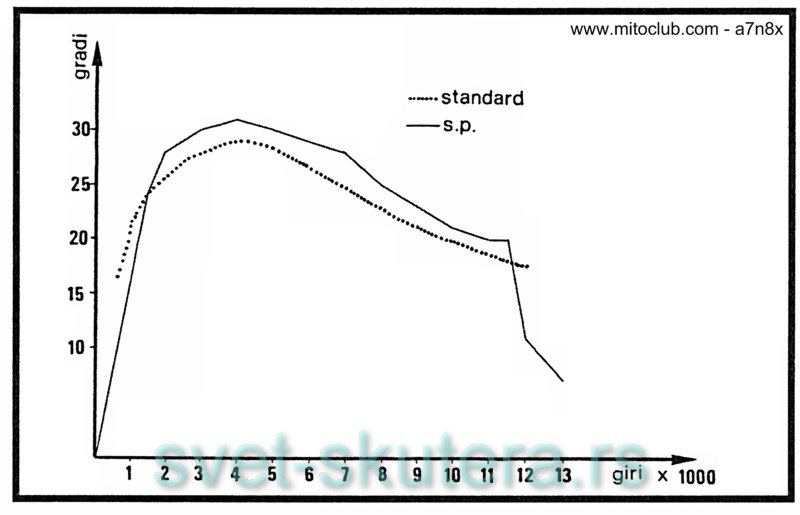Znaci sada planiras da smiris setup sa Trek-om?

#781
Posted 25 May 2015 - 04:35
Znaci sada planiras da smiris setup sa Trek-om?
#782
Posted 25 May 2015 - 08:04
#783
Posted 25 May 2015 - 19:21
#784
Posted 25 May 2015 - 23:45
 Lauda, on 25 May 2015 - 04:35, said:
Lauda, on 25 May 2015 - 04:35, said:
Znaci sada planiras da smiris setup sa Trek-om?
Trudim se da sto bolje opisem i usklikam koliko mogu. Znam koliko to znaci svima, bolje je da se unapred zna. Koliko je samo meni znacilo kad vidim neciju temu gde je sve lepo uradjeno i opisano. Eto, svi znamo kakve su teme koje Mario postavi. Kakav bi tek forum bio kad bi svi tako pedantno radili i posvecivali paznju svakom detalju. Postedecu valjda nekog nekih vecih muka. Nego fali tu dosta bitnih slika koje nisam bas u trenutku mogao da napravim ili jednostavno zaboravim. Nekad mi se i ne hvata telefon prljavim rukama...
Da, planiram za sad da ga smirim malo Trekom. Planiram dosta duzih voznji pa i ne ide bas da bijem po obrtajima u prazno. A i trebam jos svasta nesto da uradim pa dok ne dodje sve na svoje. Fino sam iznenadjen kako Trek radi na ovom cilindru. Nisam bas ocekivao da ovako lepo vuce. Jeste start malo slabiji ali da se i to popraviti. Postoji neka rupa dok ne upadne u rezonancu pa me to zezne ponekad. Ova crvena kriva oko 7k obrtaja... Nemam krivu za racing ovo je sport pro a i AC. Mozda je to sve pomereno ka vecim ciframa nekih 5-10%.

@Mario, @AcaPostar Jasno. Razumem. Mozda je c21 prenapucan za moje potrebe. Mislim, planirano je da jedan skuter napravimo za divljanje kad nam dodje do toga, a drugi za prevoz od tacke A do tacke B. E sad kako je Boka poceo da redovno skuterom ide u skolu, meni preostaje da sa 13k obrtaja idem do trafike ili tako negde kad mi zatreba, a pri tom cekam da se skuter zagreje da bi presao 500-1000metara...
U glavnom, danas sam montirao fabricko kvacilo sa fabrickim oprugicama jer tvrdje nemam. Start je na nekih 3k obrtaja ako lagano dodajem gas, pa do 5k pri naglom zavrtanju gasa. I eto, cini mi se da sa ovim fabrickim imam bolji start nego sa onim s6. Videcu da nabavim tvrdje oprugice. Isto tako sam proverio izlaznos fabrickog kaisa, koji je obrisao sve linije po varijatoru 1mm do kraja.
Montirao sam i centralne nogare kako bih mogao da proverim paljenje na malo vecem broju obrtaja. Evo sta sam dobio. Ler je na nekih 1500rpm a mislim da je isao do 10300rpm. Sad steta sto sam provukao kablove onog s6 multimera kroz ceo skuter pa nisam mogao da ga skinem i stavim u isti kadar sa paljenjem i vidim tacno koliko stepeni pri koliko obrtaja.
#785
Posted 25 May 2015 - 23:55
#786
Posted 26 May 2015 - 00:11
Razlikuje se od ove... Znaci, od prilike na 10k+ obrtaja je negde 12* paljenje. Sad vise manje izgleda i stoboskop malo brljavi na tim obrtajima.

#787
Posted 26 May 2015 - 09:40
#788
Posted 26 May 2015 - 20:06



Grafik izveden sa snimka. Moguce su sitne greske...

Snimak do 12300rpm

Edited by MaRk0, 26 May 2015 - 20:14.
#789
Posted 26 May 2015 - 21:08
#790
Posted 26 May 2015 - 22:30
#791
Posted 27 May 2015 - 00:14
#792
Posted 27 May 2015 - 10:56
#793
Posted 27 May 2015 - 11:04
Voleo bi da vidim tvog eagle-a na nekom od narednih skupova, da vidim kako si ga ustelovao i koliko nam se motori razlikuju od onih koje smo nekada imali..
#794
Posted 29 May 2015 - 00:55
 Mario, on 27 May 2015 - 10:56, said:
Mario, on 27 May 2015 - 10:56, said:
Nisam razumeo. U kom smislu da laziram uglove? Mogu samo ovu krivu paljenja da podizem i spustam tj. da pomeram stator ulevo ili udesno... I pitanje, da li moze od prevelikog ugla predpaljenja da ode iglicasti u velikoj?
 bojan681, on 27 May 2015 - 11:04, said:
bojan681, on 27 May 2015 - 11:04, said:
Voleo bi da vidim tvog eagle-a na nekom od narednih skupova, da vidim kako si ga ustelovao i koliko nam se motori razlikuju od onih koje smo nekada imali..
Veruj mi voleo bih i ja da dodjem, ali je problem. Suvise mi je daleko... Jedino kombijem nekim nas 3-4 da dolazimo. A sto se setupa tice, trek je samo za ovih mesec-dva.
#795
Posted 29 May 2015 - 09:04
ovamo kada je fiksno pomereno na 17 ili 19 pa ljudi ulaze u 11000 bude čak i gore od tvoje situacije..
sve jedno , mislim da je mene nervirao taj nemiran rad na leru, ne sećam se već šta sam dobio u špicu...
#796
Posted 04 June 2015 - 03:51


Timing the PVL ignition to your engine requires the use of a dial indicator type timing gauge to measure the position of the piston. By aligning the marks on both the rotor and the stator, and measuring the position of the piston before top dead center (BTDC), you will be able to set the timing to the needs of your engine. The timed interval between ignition and when the piston reaches TDC in a cylinder is expressed in degrees of flywheel (crankshaft) rotation. Because the spark is always fired before the piston reaches TDC, the timing is considered “advanced”. The greater the number of degrees before TDC the spark is fired, the more advanced the ignition timing is for that cylinder. When the number of degrees at which the spark is fired is reduced, the timing has been “retarded”. It should be noted that even though the timing in a cylinder may have been retarded, the spark is still being fired before TDC and is still considered advanced, just not as much.
Izvor: http://www.pentonrac...nstructions.pdf
http://www.pentonrac...ignitions.shtml
Ovo sam nesto nakopao na netu. Koliko sam ja razumeo sve ovo, ja sam proslu radilicu spucao samo zato sto sam paljenje oterao u 40*+ pre GMT. Secam se da nisam mogao da nateram motor preko 12k obrtaja, pa sam umesto da trazim problem u karburatoru ili prenosu, ja pametan rotirao stator do kraja u levo bez provere paljenja stroboskopom... Time sam dobio obrtaje 14k+ ali sam u delu u kome kriva ide u najveci advance (od 2000 do 6000rpm) imao toliko preuranjeno paljenje (jbg skoro 45*) da je nesto moralo da se desi. Ok, motor je preletao te obrtaje ali uz onaj grizgavi zvuk. Zamisljam ovu krivu paljenja pomerenu za 10-15* na gore.

Koje mogu da budu posledice prevelikog predpaljenja?
 Mario, on 27 May 2015 - 10:56, said:
Mario, on 27 May 2015 - 10:56, said:
Verovatno si na to dobijanje po nosu mislio? A ono pomeranje krive na ranije, mislis da je spustim blize GMT (da retardiram paljenje odnosno pomerim stator u desno?
#797
Posted 04 June 2015 - 09:09
ja sam ubio jedan T6 klip, ali sam imao problema sa napajanjem goriva u paru, mada iskreno mislim da je prevelika temperatura uradila svoje
dobar je ovaj tekst što si nakopao
#798
Posted 09 June 2015 - 02:46
#799
Posted 09 June 2015 - 10:04
#800
Posted 12 June 2015 - 02:01
Drzite mi palceve da ponovo ne zajebem nesto. Vratio sam fabricki finalni prenos. Ono produzenje od 25% je izgleda previse. Imam odlicnu maksimalnu brzinu ali me ubrzanje zeza pri nizim obrtajima.
E sad, nisam stavio dihtung kad sam sklopio prenos i nesto mi se previse cuje kad rukom okrecem tocak. Takodje osovinica primara koja ulazi u lezaj je malo manjeg promera pa sam da se ne bi vrtelo unutra stavio tanju gumicu da probam da pritisnem osovinicu za unutrasnji prsten lezaja. I opet nisam slikao jer sam bio u zurbi... Moram da nabavim 10ak komada tih dihtunga jer me nervira to sto ih pocepam pri svakom skidanju.
1 user(s) are reading this topic
0 members, 1 guests, 0 anonymous users


 This topic is locked
This topic is locked














